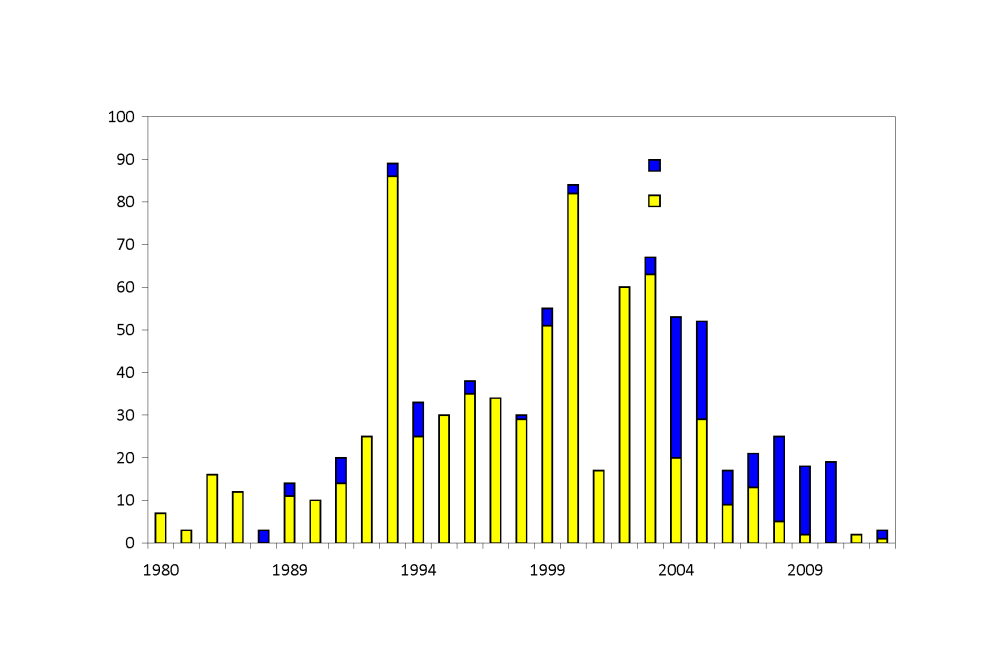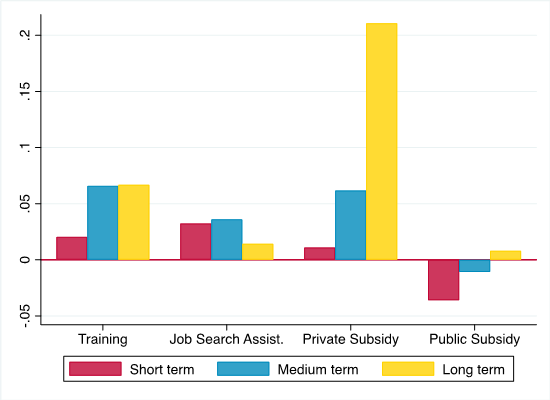What works? Lessons from Active Labor Market Policy evaluations
17.11.2021 Blog Professor Andrea Weber

The rapid restart of economies after the COVID-19 related lockdowns comes with challenges for the labor market. In search of solutions to these challenges, policy makers look at past experiences with Active Labor Market Policies (ALMPs). It appears that past findings have influenced policy decisions. Modern ALMPs have become more specialized and better targeted at specific participant groups.

The rapid restart of economies after the COVID-19 related lockdowns comes with challenges for the labor market. In many countries, firms find themselves in sudden need of workers and post many vacancies. While there is a large pool of unemployed workers who lost their jobs during the pandemic, these vacancies are hard fill. In search of solutions to these challenges, policy makers look at past experiences with Active Labor Market Policies (ALMPs), which have been used for over 50 years to confront high unemployment and frictions in matching workers and jobs.
My recent studies with David Card and Jochen Kluve summarize findings from a large number of studies that evaluate the effectiveness of single programs by comparing outcomes of program participants and a control group of non-participants. In total, we collected 207 studies which cover ALMPs implemented since the early 1980’s in almost 50 countries. These studies provide 857 separate program effect estimates, most of them measuring the effect of program participation on the probability of employment. Beside short-term effects, measured in the first year after program completion, many studies also provide estimates over a medium term (1-2 years), and longer term (more than 2 years after) horizon. Figure 1 presents the distribution of program estimates over time with separate counts for experimental and non-experimental estimates, which indicates a clear trend toward an increasing use of experimental designs.
Our meta-analysis reaches five main conclusions:
1) There is clear evidence that ALMPs have relatively small effects in the short run but larger effects in the medium and longer run.
2) The time-profile of average impacts varies with the type of program. As illustrated in Figure 2, job search assistance programs that emphasize “work first” tend to have larger effects in the short run which diminish in the longer run, whereas training and private-sector employment subsidy programs have larger effects in the medium and longer run. Public sector employment subsidy programs tend to have small or even negative effects over all horizons.
3) Average program impacts vary across groups, with larger effects for females and participants from the pool of long term unemployed, and smaller effects for older workers and youths.
4) Comparing the relative efficacy of ALMPs offered at different points in the business cycle, the meta-analysis confirms that programs in recessionary periods tend to have larger impacts than in expansions.
5) There is no systematic difference in average program effects estimated from studies using experimental or non-experimental designs.
Looking at more recent evaluation studies, whose results are not yet included in the meta-analysis, it appears that past findings have influenced policy decisions:
Modern ALMPs have become more specialized and better targeted at specific participant groups, such as young workers entering the labor market or refugee immigrants, who are specifically disadvantaged in the labor market. Furthermore, the program design frequently involves the demand side, either by directly interacting with potential employers or offering training in occupations facing a shortage or workers. Regarding skill training, some recent programs put emphasis on soft skills and worker motivation over general job skills.
Writer:
Professor Andrea Weber (Central European University)

Andrea Weber is professor of economics at the Central European University, working in areas of labor and public economics. Her research and teaching focuses on the interaction of labor markets and public institutions. She is interested in topics such as gender differences, the role of firms in the labor market, social insurance programs, and program evaluation. Before joining CEU she taught at UC Berkeley, the University of Mannheim and the Vienna University of Economics and Business. Professor Andrea Weber's website.
Professor Andrea Weber keynote speech presentation at the same subject at VATT day 2021 Labour market and employment -seminar on 1st October 2021 can be found on VATT day 2021 website.
References:
David Card, Jochen Kluve, Andrea Weber (2018). “What Works? A Meta Analysis of Recent Active Labor Market Program Evaluations. ”, Journal of the European Economic Association, 16(3), Pages 894–931
Card David, Kluve Jochen, Weber Andrea (2010). “Active Labour Market Policy Evaluations: A Meta-analysis.” Economic Journal, 120, Pages F452–F477
Figures:
Figure 1: Number of Program Estimates by Year of Program Start

Figure 2: Average program effects by program type and time horizon

Blog
Blogit
Labour markets
Labour markets and education
employment
evaluation of labour market programs
labour markets

